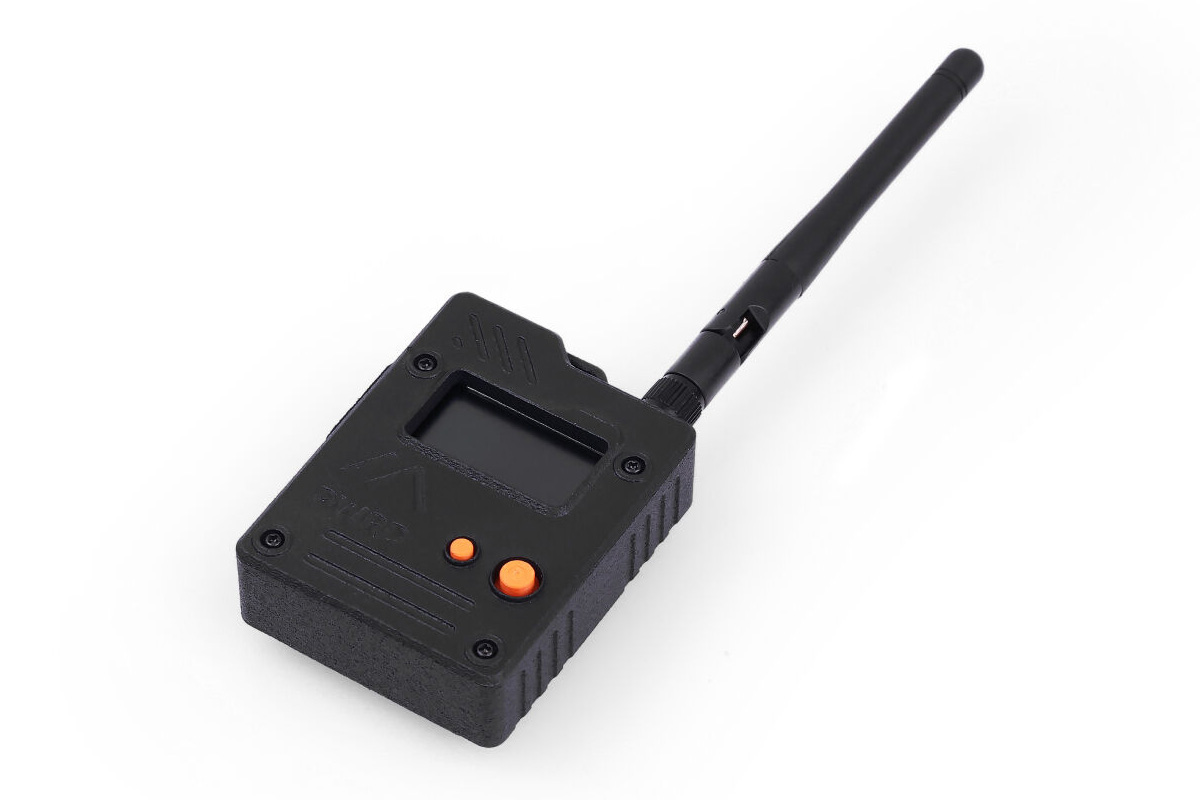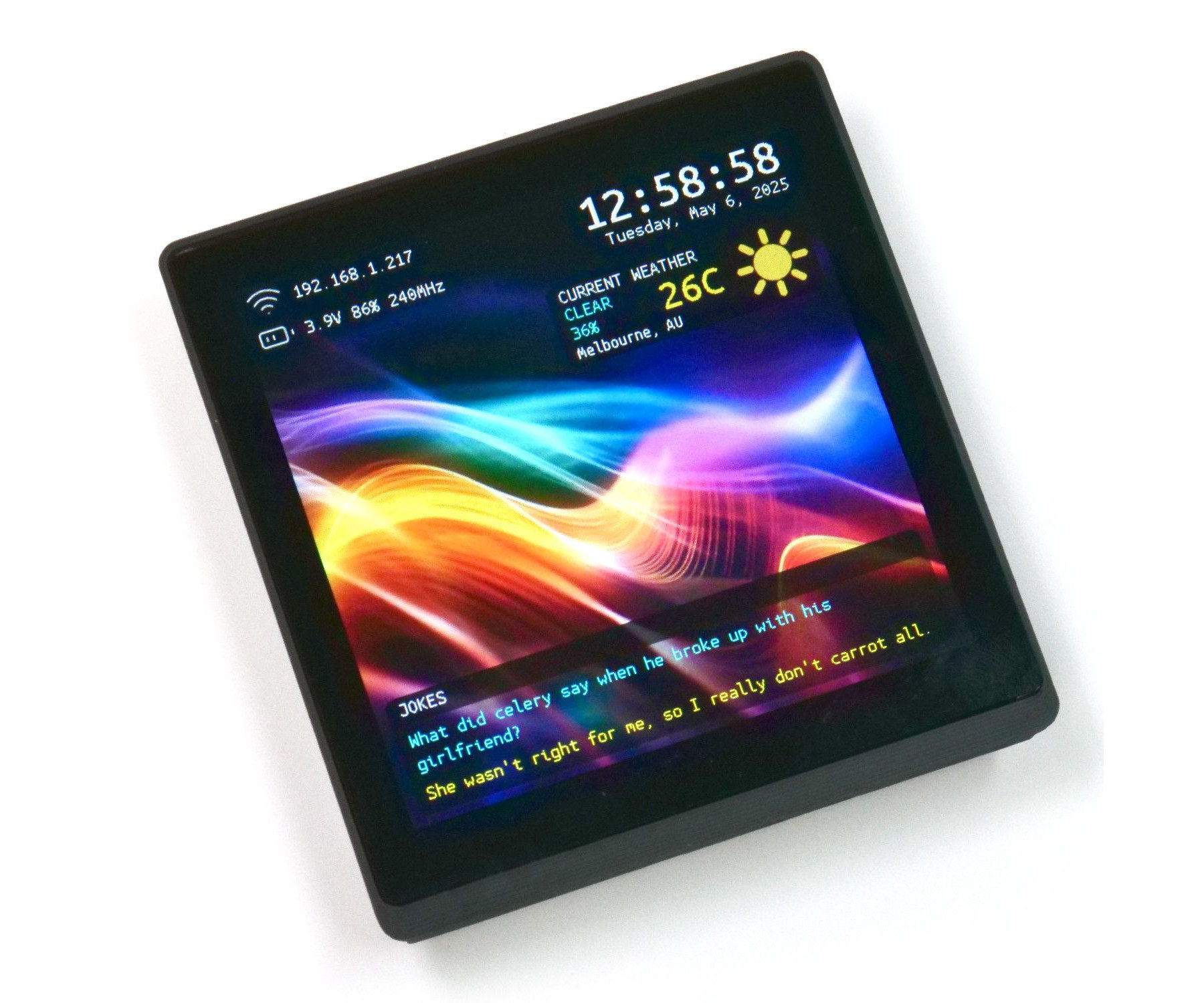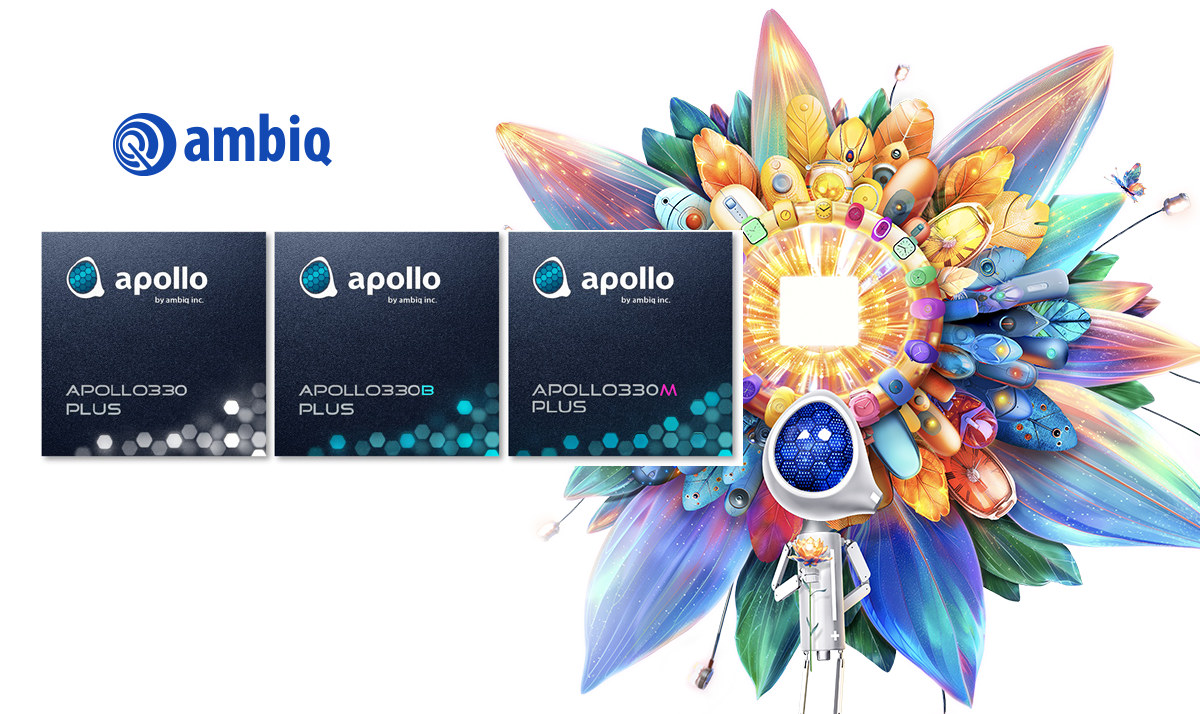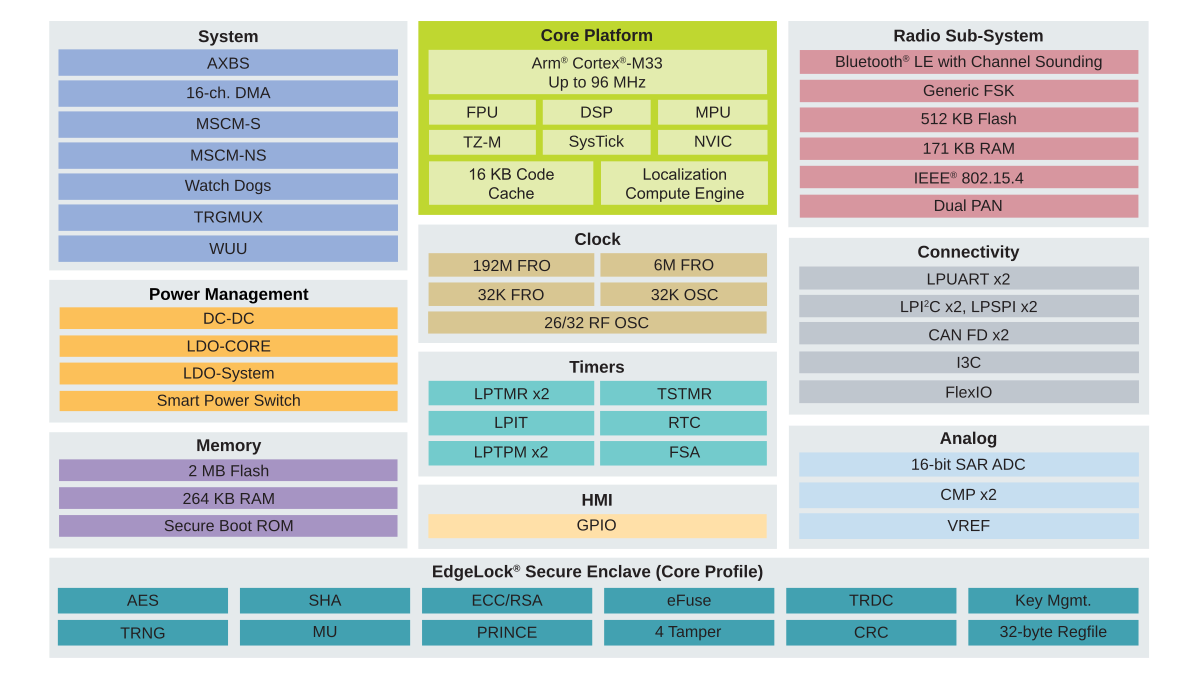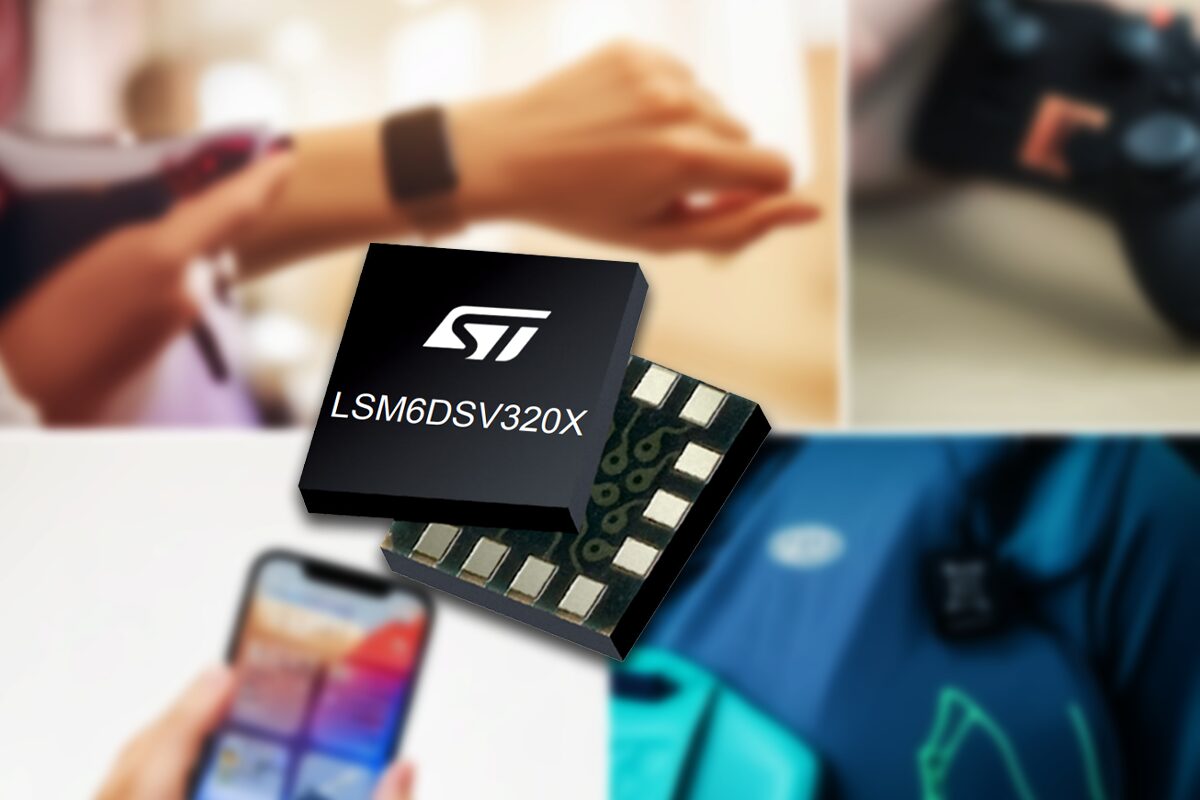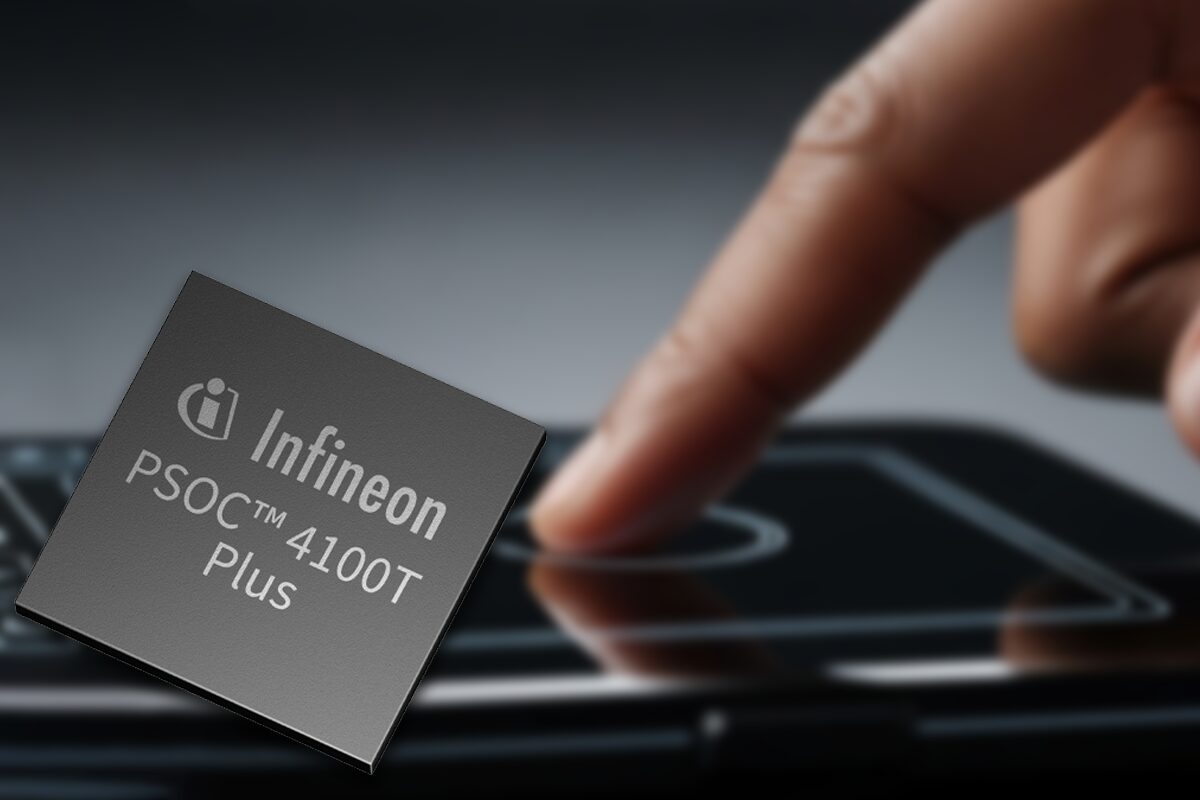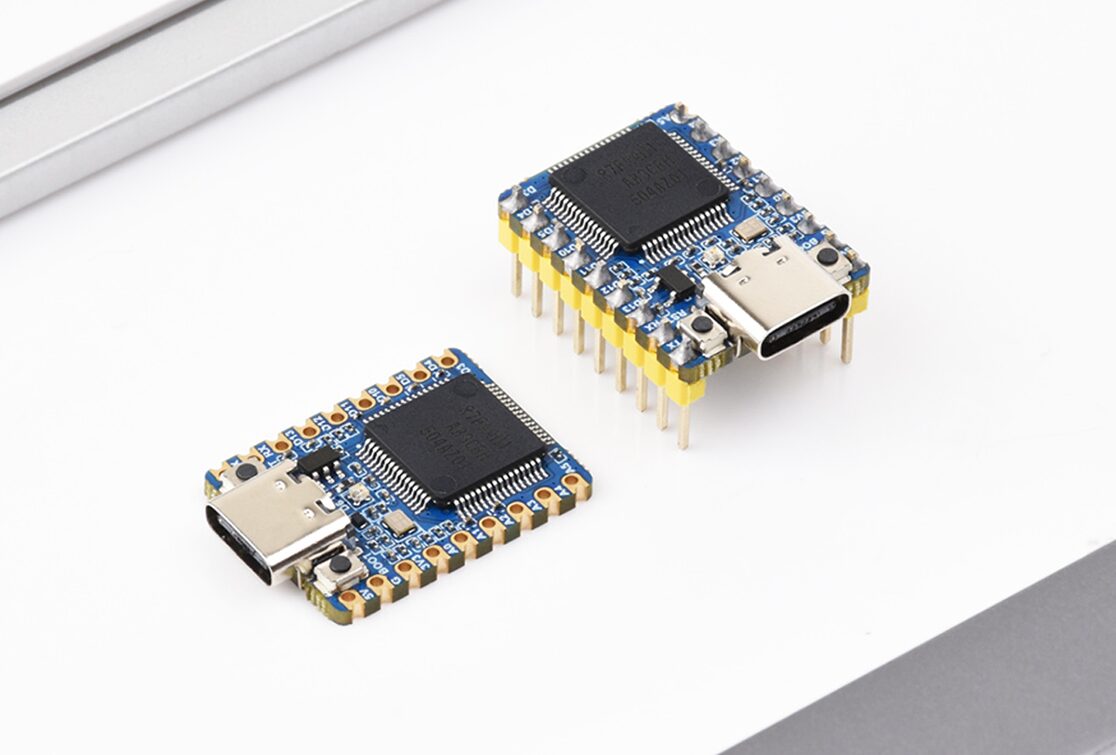The Wio Tracker L1 Pro is a battery-powered LoRa node pre-flashed with the Meshtastic firmware for low-power off-grid messaging and GPS coordinates sharing. It integrates a Semtech SX1262 LoRa module for wireless data transmission and uses a Nordic nRF52840 Bluetooth 5.0 SoC to process and display the data. The L1 Pro also features a 1.3-inch OLED display, a rechargeable battery, a USB Type-C port, and a solar panel connector housed in a durable 3D-printed enclosure. It is fully compatible with the Grove ecosystem and offers expansion via PTH headers and an SWD interface. Wio Tracker L1 Pro specifications: SoC – Nordic Semiconductor nRF52840 CPU – 32-bit Arm Cortex-M4F microcontroller @ 64 MHz Memory & storage – 1 MB Flash, 256 KB RAM Wireless – Bluetooth 5, Thread, ANT, Bluetooth Mesh, 802.15.4 (Zigbee), 2.4 GHz proprietary Display 1.3-inch OLED display with 64 x 28 resolution Active Area – 34.5mm x 23.0mm x 1.47mm […]
Battery-powered SQUiXL devkit pairs 4-inch touchscreen display with ESP32-S3 WiFi and Bluetooth SoC
Unexpected Maker’s SQUiXL is a battery-powered ESP32-S3 WiFi and Bluetooth IoT controller and development platform with a 4-inch touchscreen display with 480×480 resolution. Designed for makers, hardware engineers, embedded developers, and home automation enthusiasts, the SQUiXL integrates with 8MB PSRAM and a 16MB SPI flash for plenty of resources for the firmware. Other features include a microSD card, an amplifier with speaker connector, a haptic driver and motor, an RTC, and a STEMMA/Qt connector for expansion. SQUiXL specifications: WiSoC – Espressif Systems ESP32-S3 CPU – Dual-core Tensilica LX7 @ up to 240 MHz with vector instructions for AI acceleration Memory – 512KB RAM Wireless – 2.4 GHz WiFi 4 and Bluetooth 5.0 LE + Mesh Memory – 8MB octal PSRAM Storage 16MB QSPI flash MicroSD card slot (multiplexed with audio amplified) Display – 4-inch 480×480 RGB display with capacitive touch (GT911) Audio MAX98357A I2S Audio Amplifier (multiplexed with microSD card […]
Ambiq Apollo330 Plus SoC Series Cortex-M55 MCU family offers optional Bluetooth 5.4 LE and 802.15.4 radios
Ambiq Apollo330 Plus SoC Series is a new family of ultra-low-power, sub-threshold Arm Cortex-M55 microcontrollers with optional Bluetooth 5.4 LE and 802.15.4 radios for IoT and Smart Home applications. The Ambiq Apollo330 Plus MCU itself appears to be a cost-down version of the Ambiq Apollo510 general-purpose Cortex-M55 MCU introduced last year, with the removal of display and graphics support, lower RAM and NVM capacities (2MB/2MB vs. 3.75MB/4MB), and fewer I/Os, but with a wider 1.71 to 3.63V voltage supply range. Two other SKUs add wireless: the Apollo330B Plus includes a Bluetooth 5.4 LE radio, and the Apollo330M Plus an extra 802.15.4 radio for Zigbee, Thread, and Matter as a multiprotocol SoC. Ambiq Apollo330 Plus specifications: CPU Core – 32-bit Arm Cortex-M55 @ 96 MHz / 250 MHz (turboSPOT) with Helium technology, Network coprocessor Memory- 2MB SRAM Storage 2MB NVM SDIO v3.0 and eMMC flash controllers Wireless Arm Cortex-M4F network processor […]
NXP MCX W72x Cortex-M33 wireless SoC supports Bluetooth 6.0 with Channel Sounding, Zigbee, Thread and Matter
NXP MCX W72x series Cortex-M33 wireless SoCs support for Bluetooth 6.0 and an 802.15.4 radio for Zigbee, Thread, and Matter. The MCX W72x family also implements Bluetooth Channel Sounding for accurate distance measurements with the help of a Localization Compute Engine (LCE) to reduce latency. It’s the second MCU part of the MCX W wireless family following the MCX W71x MCU, and the new MCX W72x wireless microcontroller is offered with up to 264 KB SRAM, 2MB flash, features a dedicated Cortex-M33 core to handle Bluetooth and 802.15.4 radios, implements an EdgeLock Secure Enclave for security, and integrates plenty a range of I/Os in a 48-pin package. NXP MCX W72x key features and specifications: MCU cores and memory/storage Application core – Arm Cortex-M33 core up to 96 MHz with 2 MB program Flash with ECC, 264 kB SRAM with ECC and parity Networking core – Arm Cortex-M33 core with dedicated […]
ST’s LSM6DSV320X – An AI-enabled IMU with two MEMS accelerometers for activity and shock detection
STMicroelectronics has introduced the LSM6DSV320X, a compact AI-enabled inertial measurement unit (IMU) that integrates a 3-axis digital gyroscope, a 3-axis low-g accelerometer (±16g), and a 3-axis high-g accelerometer (±320g) in a tiny 3 x 2.5mm package, ideal for space-constrained IoT devices such as wearables, smartphones, gaming controllers, smart tags, personal safety gear, and industrial monitoring systems. Most motion sensors are designed to track daily activities or detect sudden impacts, but the LSM6DSV320X is built to do both. One accelerometer tracks everyday motion up to ±16g, while the other handles high-impact events up to ±320g. One of the most interesting features is its adaptive self-configuration (ASC), which allows real-time adjustment of internal settings based on activity without the need for a host CPU, optimizing power use and responsiveness. It also includes a machine learning core (MLC) capable of running up to eight decision trees and a finite state machine (FSM) to […]
Infineon PSoC 4100T Plus multi-sense Arm Cortex-M0+ MCU supports ML-based liquid level sensing, wake-on-touch with 8µA deep sleep mode
Infineon PSoC 4100T Plus is a new low-power Arm Cortex-M0+ MCU designed for battery-powered or low-power embedded systems that require advanced capacitive touch and proximity sensing. The microcontroller comes with 128 KB of flash, 32 KB of SRAM, and an 8 KB ROM. One of the most interesting features of this MCU is Infineon’s fifth-generation CapSense MSCLP technology, which enables high-resolution, low-power capacitive sensing even in deep sleep mode (as low as 8 µA). Its capacitive sensing uses both self and mutual capacitance methods, supported by analog front-end filtering, sigma-delta modulation, and digital filtering techniques, delivering a signal-to-noise ratio greater than 5:1 for accurate detection. The MCU supports gesture detection, human-machine interfaces (HMI), and smart sensing applications, making it ideal for wearables, consumer devices, and IoT systems. Additional features include a 12-bit 1-MSps SAR ADC, six TCPWM blocks, smart I/O with programmable logic functions, multiple UART/I2C/SPI interfaces, and up to […]
Silicon Labs SiXG301 and SiXG302 “Series 3” wireless SoCs are built for line-powered and battery-powered IoT applications
Silicon Labs has just introduced the first 22nm Series 3 SoCs with the SiXG301 and SiXG302 Arm Cortex-M33 multiprotocol wireless SoCs designed for line-powered and battery-powered IoT devices, respectively. The SiXG301 is offered with 4MB flash and 512 KB SRAM, embeds an LED pre-driver for advanced LED smart lighting and smart home products, and supports 2.4 GHz wireless protocols such as Bluetooth, Zigbee, and Thread with support for Matter. The upcoming SiXG302 Bluetooth and Matter SoC offers an ultra-low-power consumption using only 15 µA/MHz active current, or 30% lower than competitive devices in its class, and as such is ideal for battery-powered wireless sensors and actuators. We’ll be focusing on the SiMG301 multi-protocol SoC and SiBG301 Bluetooth LE SoC in this article since the details are sparse for the SiXG302 parts (SiMG302 and SiBG302). Silicon Labs SiMG301 / SiBG301 specifications: MCU Core – 32-bit Arm Cortex-M33 with DSP instructions and […]
Waveshare RA4M1-Zero mini development board features secure boot, firmware encryption, and castellated design
Waveshare RA4M1-Zero is a mini development board built around the Renesas RA4M1 32-bit Arm Cortex-M4 MCU running at 48MHz. The MCU also features 256KB of flash memory, 32KB of SRAM, 8KB of EEPROM, and a built-in Floating Point Unit (FPU). Hardware peripherals include a 14-bit ADC, a 12-bit DAC, a CAN bus controller, an onboard USB 2.0 interface, and WS2812 RGB LED. The MCU also supports firmware encryption, secure boot, and tamper-proof security features to ensure application safety. Its small size (23.5 x 18mm) and castellated module design make it suitable for space-constrained applications, including IoT devices, industrial control systems, secure embedded systems, and compact sensor nodes. RA4M1-Zero mini development board specifications: MCU – Renesas RA4M1 (R7FA4M1AB3CFM) as found in the Arduino UNO R4 CPU 32-bit Arm Cortex-M4F @ 48MHz Memory – 32KB SRAM Storage – 256KB Flash, 8KB EEPROM USB – USB 2.0 device interface via USB Type-C connector […]


